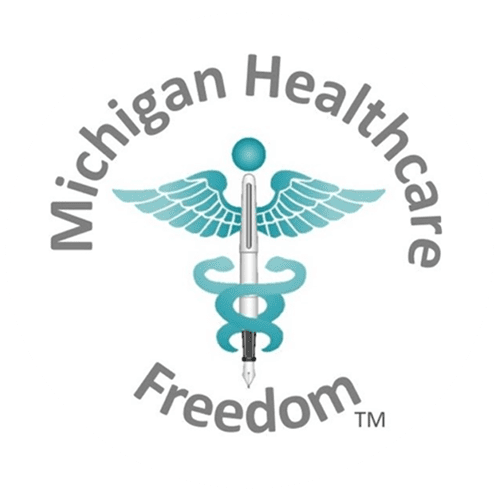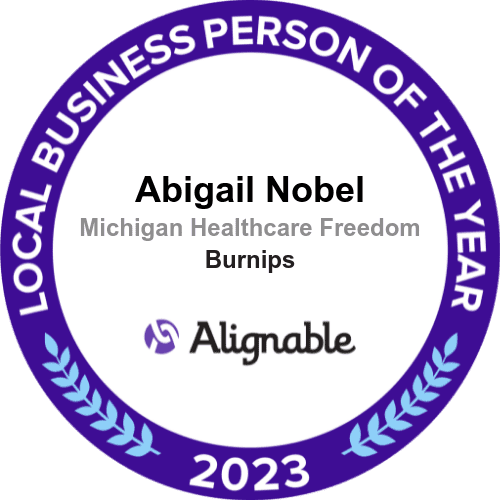
No one seems happy with President Trump’s actions to expand access to in vitro fertilization (IVF):
https://thehill.com/policy/healthcare/5561456-trump-ivf-action-mixed-reactions/
Trump’s IVF moves: ‘Huge leap’ or ‘broken promises’?
By Joseph Choi - October 18, 2025President Trump’s dual-pronged action on expanding access to in vitro fertilization (IVF) is garnering mixed reactions from lawmakers, advocates and medical groups, with some calling it a step in the right direction, if only to start the conversation.
Speaking from the Oval Office on Thursday, Trump announced new federal guidance on insurance coverage for IVF services, as well as his administration’s latest deal with a drug manufacturer under his “most favored nation” pricing policy.
The updated guidance from the Department of Labor, the Treasury Department and the Department of Health and Human Services (HHS) would make opting in to fertility benefits similar to opting in for dental or vision benefits as part of an employer’s insurance plan.
EMD Serono, the manufacturer of commonly used infertility treatments like Gonal-F, announced it would be offering its “leading IVF therapies” at steep discounts. The company said in a press release that the agreement came with an exemption from Section 232 tariffs that the White House had threatened against pharmaceutical companies.
On the campaign trail, Trump — who called himself the “father of IVF” on Thursday — had vowed to make IVF available to everyone, either by the government funding it or by requiring insurers to cover it. The initiatives announced Thursday resemble neither of these plans.
Still, the announcement was well-received by some groups championing fertility services.
Moshe Margaretten, founder and president of Americans for IVF, called it a “huge leap forward in the fight to make fertility care affordable and accessible.”
“But as meaningful as this step is, we know our work is not finished. Indeed, the president said today that this is just the beginning,” Margaretten said. “We will continue working with the White House and Congress, advocating for further reforms until every family struggling with infertility can find the support and opportunity they deserve.”
Alabama Sen. Katie Britt (R) called the announcement the “most pro-IVF thing that any president in the history of the United States of America has done.”
Sean Tipton, chief advocacy and policy officer of the American Society for Reproductive Medicine, agreed with Britt’s assessment.
“But I think that indicates what a tremendously low bar that is. Because these policy announcements are not going to accomplish what the president said he wanted to accomplish, that is to make IVF available to everybody,” Tipton said.
He agreed that finances are a significant barrier to accessing IVF services, particularly in the U.S., but he wasn’t entirely sold on the plan requesting that employers consider covering fertility services for their employees.
“There are no sticks here. It’s all moderate carrots,” he said.
While acknowledging that a presidential endorsement of IVF coverage could go a long way, Tipton said this policy was “not nearly as valuable as a law,” and it’s unclear how many companies would actually be willing to cover the very costly procedure, with an IVF cycle costing between $15,000 and $20,000.
A reduction in the cost of Gonal-F is still significant, however, as the drug component of a cycle can cost between $5,000 and $6,000.
Sen. Elizabeth Warren (D-Mass.) blasted the nature of the policy, given that Congress is locked in a fight over ensuring continued health care coverage.
“It’s clear that Donald Trump lied when he told the American people he’d make IVF available to every family for free,” Warren said immediately after the announcement.
“Instead, Trump’s new genius plan is to rip away Americans’ health insurance and gut the CDC’s IVF team, then politely ask companies to add IVF coverage out of the goodness of their own hearts — with zero federal investment and no requirement for them to follow through. It’s insulting, and yet another one of Trump’s broken promises to American families,” she added.
Pushback from anti-abortion voices was also anticipated, given that unused embryos are regularly discarded or donated in the IVF process. Trump was asked about this anticipated criticism, which he dismissed by saying, “You can’t get more pro-life than this.”
“Any policy in this space, from the White House or Congress, must treat the lives of the smallest children in the highest regard,” Marjorie Dannenfelser, president of the anti-abortion group Susan B. Anthony Pro-Life America, said in a statement, reiterating her organization’s stance that “human embryos should not be destroyed.”
“We support focusing on restorative fertility treatments to help couples struggling with infertility, and urge high ethical and medical standards for the IVF industry,” she added. “Too often, the IVF industry is given blanket immunity — despite growing numbers of horror stories like rogue practitioners switching embryos, ignoring basic safety standards, or negligently destroying embryos.”
Granting embryos personhood was at the core of the lawsuit that pushed IVF into the national conversation last year when the Supreme Court of Alabama ruled that frozen embryos could be considered the same as children. This temporarily put IVF services in the state on pause, with clinics apprehensive of risking legal action.
Republican lawmakers found themselves in a uniquely difficult position: They concurred with the court’s findings while also being reticent to support blocking IVF services. Democrats, in turn, cited the ruling as an escalation of the overturning of Roe v. Wade, placing blame on Trump for nominating Supreme Court justices who helped overturn the landmark ruling.
EMILY’s List, a major Democratic group that backs female Democratic candidates who support abortion access, called it “another sorry proposal” from Trump.
“While Republicans pretend to care about women, they’re actively working to strip millions of women of their health insurance and push essential health care out of reach,” EMILY’s List President Jessica Mackler said. “Making IVF more accessible and affordable is going to rely on securing Democratic power by taking back Congress and electing women leaders across states who will deliver real solutions for these families.”
Negative story on proposed IVF changes from States Newsroom:
Trump’s IVF announcement disappoints patients, raises concerns for doctor
By Kelcie Moseley-Morris - October 21, 2025Miraya Gran is the kind of person who Republican President Donald Trump and his administration say they are going to help with new policies on in vitro fertilization.
It took a second mortgage on her Minnesota house and a family fundraiser to afford the IVF treatment she needed to have her first child in 2021. Gran’s husband has male-factor infertility, and she has a genetic blood disorder, making it extremely difficult for them to conceive on their own. But unless the cost of IVF goes down a lot, Gran can’t afford to give her daughter a sibling.
“I’ve got two embryos waiting for me, and I’m not accessing them due to lack of insurance coverage,” she said.
But Gran doesn’t have much hope left that IVF costs will drop enough after Trump’s announcement at the White House on Thursday, Oct. 16. The president said his administration negotiated steep discounts on a key fertility drug, as well as a new regulation allowing employers to offer IVF coverage as a standalone policy like dental or vision. EMD Serono, a major pharmaceutical brand, will offer the medication at an 84% discount via direct sales on a government webpage called TrumpRX, according to a company representative who spoke at the White House event.
Gran said that isn’t good enough. The drug prices are only a portion of what makes treatment expensive. One IVF cycle ranges between $12,000 and $25,000 on average but can cost more depending on medical needs. Many people require more than one round of IVF to get pregnant.
Plus, the new policy only clears the way for employers to offer coverage options — it’s not required by the government.
“They have the ability to put the onus on insurance companies,” Gran said. “There really isn’t a solution for our community until we have insurance coverage.”
Trump campaigned on a promise to make IVF treatment free for all, either through federal funding or insurance, but has so far not fulfilled that promise.
Dr. Eve Feinberg is an OB-GYN professor at Northwestern University, and a reproductive endocrinologist and fertility specialist who treats IVF patients every day. She said lowering the cost of the drugs is a positive step, but that’s only about one-third of the cost of a typical IVF cycle — less in some cases.
“For some patients, the medications can go as high as half the cost,” Feinberg said. “If you have a good reserve of eggs, you require less medication. If you have a lower reserve, you’ll need more. So for some, it’s $3,000 … and for some, it’s $10,000.”
‘Restorative reproductive medicine’ not a replacement for IVF, doctor says
Trump’s promise to make IVF free is a difficult one to fulfill not only because of the overall cost but because of divisions among conservative groups about the ethics of the treatment. IVF requires the collection of as many eggs as possible that are then fertilized. Some are later destroyed because they would not make it after implantation in the uterus due to abnormalities or other medical factors.
The Alabama Supreme Court ruled in 2024 that embryos have the same legal rights as children, which threw the medical community into chaos and caused some Alabama IVF clinics to close. Later that year, the Southern Baptist Convention adopted an anti-IVF resolution stating the church’s opposition to the practice.
The ruling happened just as Latorya Beasley was waiting on a transfer date for the embryo she hoped would be her second child. Her clinic temporarily canceled appointments but eventually reopened, and she was able to have a second child. Beasley had IVF insurance through her employer, which only about 25% of companies with more than 200 employees offer nationwide, according to KFF. But there were still out-of-pocket costs.
“There was a point where we ran out of medicine for like one day, and we paid $1,000 out of pocket for that,” Beasley said. “And that was with insurance coverage.”
Feinberg said she was also worried about the aspects of the announcement that talked about “restorative reproductive medicine,” which is a newer field of medicine not recognized by the same medical boards guiding reproductive endocrinology. The practice has been promoted by the Heritage Foundation — a conservative advocacy organization that authored Project 2025 — as the “new frontier” of reproductive medicine.
“There were certain things said in the briefing that made me think the idea of fertility coverage, especially for companies whose beliefs and ideas are religiously focused and religiously based, that may mean offering restorative reproductive medicine and not offering IVF,” she said.
The restorative practice focuses on cycle tracking to conceive, as well as weight loss and nutrition. Feinberg said she had a patient who had been using those methods for four years with no success, and she was 43 by the time a reproductive specialist told her that her husband had such a low sperm count, there was no way they could conceive without medical intervention.
“He had a genetic mutation that the restorative reproductive medicine person was not trained to ever diagnose,” she said. “They could have and should have done IVF.”
Gran and Beasley said if the Trump administration put forward plans that made a real difference for families in need of IVF, they would be the first to celebrate it. But until then, the lack of action is frustrating.
“It just feels like I’m being sold a complete line from a traveling salesman, because until there’s actual substantiated change, I have no faith in what they say,” Gran said.







